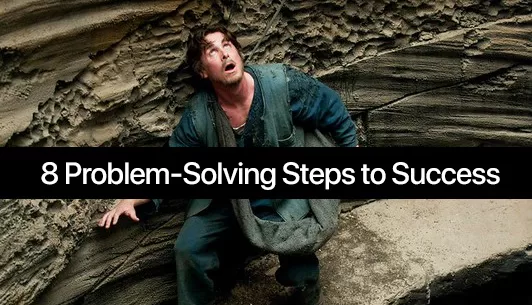In both personal and professional realms, challenges are inevitable. However, the ability to effectively tackle and overcome these challenges is a valuable skill that can lead to personal growth and success.
This comprehensive guide aims to provide a structured approach to problem-solving, offering a step-by-step process to conquer challenges with confidence.
Table of Contents
Step 1: Define the Problem
The first crucial step in problem-solving is to clearly define the issue at hand. Take the time to identify the specific aspects of the challenge, avoiding vague or broad descriptions.
Ask yourself questions such as: What is the root cause of the problem? What are the immediate and long-term consequences if left unresolved?
Step 2: Gather Information
Once the problem is defined, gather relevant information to gain a deeper understanding. Research and collect data to explore different perspectives, potential causes, and possible solutions.
This step is essential for making informed decisions and avoiding hasty judgments.
Step 3: Analyze the Situation
Analyze the gathered information systematically. Break down the problem into manageable components and evaluate each one.
Consider the relationships between different elements and how they contribute to the overall challenge. This analytical approach helps in identifying patterns and connections.

Step 4: Generate Solutions
Brainstorm a variety of potential solutions. Encourage creativity and explore both conventional and unconventional ideas.
Quantity is key in this step, as it provides a pool of options to choose from later. Avoid premature evaluation; focus on generating a diverse range of possibilities.
Step 5: Evaluate and Prioritize Solutions
Carefully assess each potential solution based on feasibility, effectiveness, and potential consequences.
Consider the resources required for implementation and weigh the pros and cons of each option. Prioritize the solutions based on their overall impact and feasibility.
Step 6: Make a Decision
After thorough evaluation, make an informed decision on the most suitable solution. Trust your judgment, considering both logical reasoning and intuition.
Remember that decision-making is a skill that improves with practice, and learning from the outcomes is essential for future challenges.
Step 7: Implement the Solution
Once a decision is made, initiate the implementation process. Develop a detailed plan, allocate resources, and execute the chosen solution.
Monitor progress closely and be prepared to adapt the plan if unexpected challenges arise during implementation.
Step 8: Evaluate the Outcome
After implementing the solution, assess the results. Evaluate the impact on the initial problem, and analyze any unintended consequences.
Learning from both successful and unsuccessful outcomes is crucial for refining problem-solving skills.
Conclusion:
Conquering challenges is a dynamic process that requires a systematic and thoughtful approach.
By following these comprehensive problem-solving steps, individuals can enhance their ability to tackle obstacles effectively, fostering personal and professional growth.
Remember, each challenge is an opportunity to learn and improve, contributing to a resilient and adaptable mindset.


0 Comments